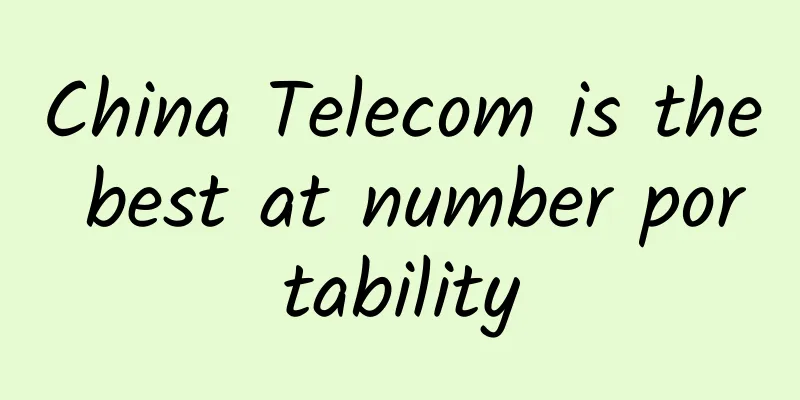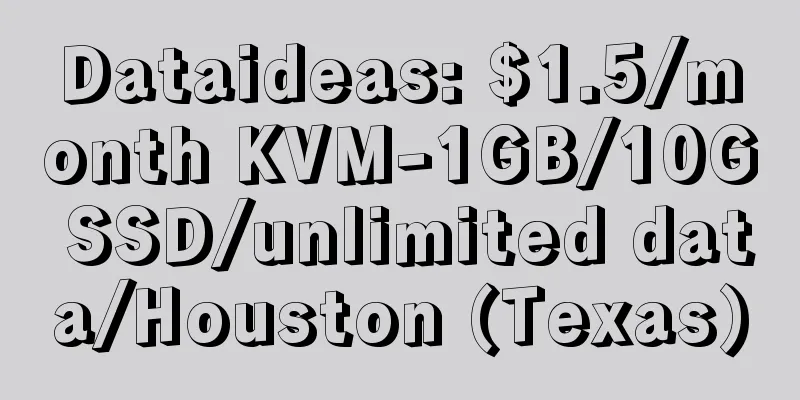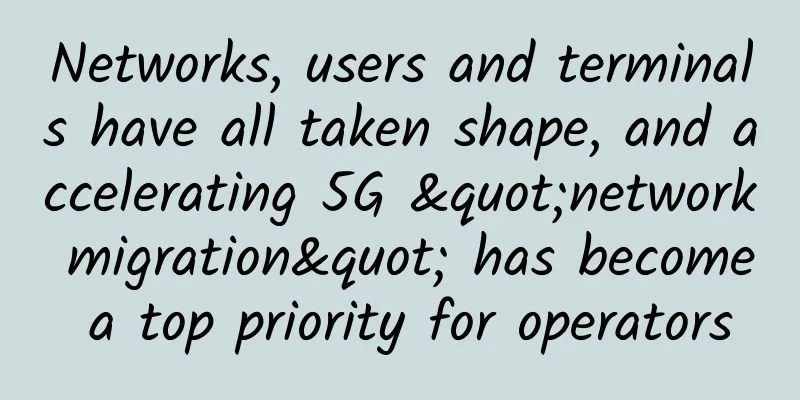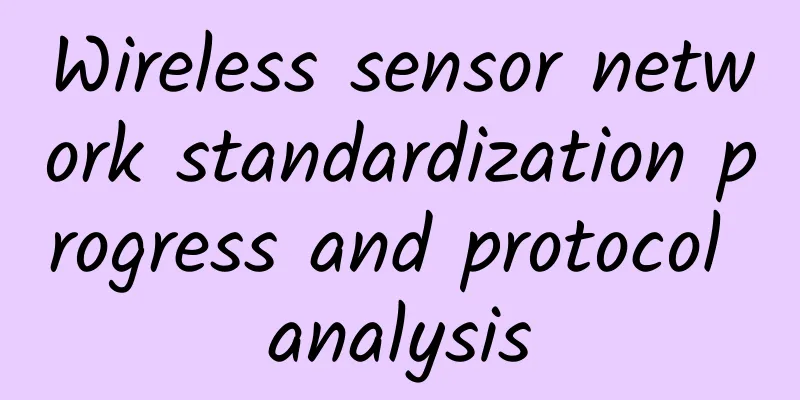From IP to IP, let's talk about the "useless" knowledge in computer networks

|
Web development is inseparable from computer networks. Computer networks are important, but not all network knowledge is useful for software development. We know that the network is layered. The OSI system is divided into 7 layers, but the TCP/IP system we actually use is divided into 4 layers. For the sake of convenience, we still learn the physical layer and data link layer separately, so there are 5 layers in total. During development, we use protocols such as IP, TCP, and HTTP to complete communication between computers. When web pages are running, protocols such as DNS are also involved. These protocols are all above the network layer, that is, they are based on IP to IP transmission to complete data communication of various protocols. What about the lower part? How is IP to IP communication achieved? This involves knowledge of the physical layer, data link layer, and network layer. This knowledge is not very useful for actual development because the code already assumes that IP and IP can communicate with each other, but knowing this can give us a comprehensive understanding of the network. This part involves network hardware and communication principles, which is quite interesting. This article will briefly discuss the knowledge of communication between IP and IP. Different types of networksConnecting different computers together to enable data communication and sharing of software and hardware is called a computer network. There are many ways to connect, and naturally there are different networks. For example, dial-up Internet access uses the telephone communication network to transmit data, just like making a phone call, so it is called dial-up, but the data transmitted is not call data. For example, satellite Internet access uses satellite signals to transmit data, which is also a network. Both of these use existing networks to achieve computer communication. The networks we build ourselves are connected by network cables, which is the most common network. For example: This type of network connection that connects all computers through a single cable is called Ethernet. Before talking about Ethernet, I wonder if you have already felt the benefits of network layering: Whether it is dial-up Internet access using the telecommunications network, satellite Internet access using satellite communications, or Ethernet connected by network cables, these networks with different structures can be naturally integrated together because of the good layering. As long as the IP protocol is implemented, no matter how the network is implemented, communication with higher-level protocols can be achieved. This is like the idea of interface-oriented programming in the field of software development. As long as you can achieve IP to IP communication, it doesn't matter how you transmit the data. Telecom and satellite networks don’t need to be paid much attention to, so let’s continue to talk about Ethernet: Multiple computers are already connected with network cables, so how do they communicate? It is OK to transmit data directly through this network cable, but now only one can send and the others can receive. In order for the target computer to receive, it is necessary to identify the destination address, so the Ethernet data frame format is as follows: In addition to the data, additional information such as the destination address and original address is also included. In this way, after each computer receives the data transmitted from the network, it determines whether the destination address is itself. If it is, it will be received, otherwise it will be discarded. In this way, network communication is realized. This is a network? It's that simple? This is indeed a small network, but it is not perfect. What if multiple computers send messages at the same time? Won't the data be mixed together? Therefore, we need to detect whether there is a conflict. The current method used by Ethernet is as follows: when you want to send a message through the network, first check whether there is an electrical signal in the network. If not, send it. If yes, wait for 1.x seconds, where x is random. If there is still a conflict when the time comes, wait for 2.x seconds, 4.x seconds, or 8.x seconds. This method is used to avoid conflicts and achieve accurate communication. This is called "exponential backoff." This will indeed avoid conflicts, but there is still a problem. If there are many computers connected, although they can communicate accurately, the efficiency will be too low if conflicts occur from time to time. Can conflicts be reduced? Computers connected to Ethernet are broadcast communications, so there may be conflicts. This is called a "collision domain". If the large collision domain can be broken down into smaller ones, wouldn't it reduce the probability of conflicts? This is what a switch does: Add a switch between several computers to separate them. When transmitting messages, if the communication is within the same small network segment, it will be directly transmitted to the target computer and will not be transmitted to other network segments. It will be transmitted to other network segments only when the MAC address does not exist in this network segment. In this way, the large network is divided into small network segments, reducing the probability of conflict and improving network transmission efficiency. This is the significance of the switch. In this way, we have built an Ethernet. internetNowadays, each network is scattered, whether it is Ethernet, a network connected by a telecommunications network, or a network connected by a satellite. There is naturally a need to connect these scattered networks. This is the Internet, which is the network that connects networks. There are many Internets, such as the military's various networks will build an Internet, and the education's various networks will build an Internet. Internets can also be connected to each other. The largest Internet is the Internet, which is so large that many networks around the world will be connected to it. But there are also Internets that are not connected to the Internet, such as the military Internet. How are these networks identified and connected? To identify the network, it is naturally necessary to number it, and the hosts within the network also need to be numbered, that is, the network number + host number needs to be specified, which is the IP address. IP addresses were originally 32 bits long, called IPv4 (later expanded to 132 bits, called IPv6). For example, this is an IPv4 address: 11010010010010011000110000000100 To make it easier to remember, we divide it into four segments, each with 8 bits, so it looks like this: 210.73.140.2 This 32-bit address, which is divided into four segments, contains both the network number and the host number. If the first segment is used as the network number, the remaining three segments are the host number, which can identify more than 16 million computers. If the first two segments are used as the network number, it can identify more than 60,000 computers. If the first three segments are used as the network number, only the last segment is used to identify the host, which can identify 254 computers. This is how the network is divided into three types: ABC. After talking about IP addresses, let’s talk about the largest Internet. The internet is a network that connects many networks around the world. It naturally has a backbone network, and then it connects to the networks of various countries. Each country has a dedicated network provider (ISP) for accessing the internet. For example, China has ISPs such as China Unicom, China Mobile, and China Tietong. They access the internet, and we then access their networks. How are the networks connected? It is through a router that connects multiple networks and is responsible for selecting a network to transmit data to based on the IP address. Many students cannot tell the difference between a router and a switch. In fact, it is very easy to distinguish: a switch is used to isolate conflict domains within the network and improve network efficiency, forwarding messages based on MAC addresses. A router is responsible for forwarding data between different networks, determining the network and host based on the IP address and then forwarding it. The IP address records the network number and host number, so the network number can be used to determine which network it is. But how can we determine which host it is based on the host number? Isn't it enough to broadcast once in this network? Pass the IP address to each host in the network. If it is your own, then return your MAC address, so that the router knows to whom to send the message. This query process from IP to MAC address is called ARP (Address Resolution Protocol) protocol. At this point, we have completed the communication from IP to IP, and we are more familiar with the above protocols, that is, TCP, HTTP, etc. These are the protocols we use all day long in software development. SummarizeComputer networks are layered. The OSI architecture is divided into 7 layers, and the actual TCP/IP architecture is divided into 4 layers. For the convenience of learning, we still regard it as 5 layers. The advantage of layering is that each layer can flexibly replace the implementation scheme. For example, as long as you have implemented IP to IP communication, it doesn’t matter whether you are using a satellite-connected network, a telecommunications-connected network, or Ethernet, it will not affect the various protocols of the upper layer. Satellites, telephone networks, etc. are all existing networks. The networks we build ourselves are generally based on Ethernet, which means that all computers are connected by one network cable, which is called a bus type. Ethernet uses broadcast communication. In order to avoid conflicts, messages are sent through exponential backoff, but this will reduce transmission efficiency. Therefore, switches are introduced to isolate conflict domains, which divide the network into different segments. When the switch encounters communications in the same segment, it will not pass them to other segments, thus reducing the probability of conflicts. The connection between networks is called the Internet. There are many types of Internet. The world's largest Internet is the Internet, but not all Internets are in the Internet. For example, the military Internet will not be connected to the Internet. The Internet has a backbone network to connect the networks of various countries and regions. Each country has an Internet service provider ISP responsible for accessing the Internet, such as China's Unicom, China Mobile, China Tietong and other operators. The network is identified by IP, which is composed of network number + host number, and the router is responsible for forwarding data between networks through IP. In order for a router to forward packets, it must first look up the MAC address based on the host number in the IP. The corresponding query protocol is called the ARP protocol, which is also implemented through broadcasting. This enables IP-to-IP communication between any two hosts on the Internet. The IP, TCP, HTTP, DNS and other protocols we usually use in software development are all implemented on these foundations. Knowledge below the network layer is indeed of little help to our development, but it is still quite interesting to understand. |
<<: 5G RedCap is coming soon! But how difficult is it to fully commercialize it?
>>: Computers won’t lie. If something is abnormal, there must be something fishy going on!
Recommend
How to use Layer 3 switches to build enterprise VLANs
The expansion of enterprise scale has led to the ...
CNNIC releases the 49th "Statistical Report on Internet Development in China"
The China Internet Network Information Center (CN...
What is Single Pair Ethernet (SPE) and how is it used in industrial applications?
[[416579]] Single-pair Ethernet was originally de...
Huawei wins "2018 GSMA Mobile Industry Outstanding Contribution Award"
At a special ceremony held last night, GSMA prese...
RackNerd Los Angeles restock, low-cost US VPS annual payment starts from $9.89
RackNerd is a foreign hosting company founded in ...
UUUVPS: 60 yuan/month-1GB/30GB/4M/Hong Kong CN2 line
UUUVPS is now holding a three-year anniversary ev...
Why the development of optical communications is not as good as 5G, experts say: each is fighting for its own
At the 2021 China Optical Network Conference whic...
What are the most common "wireless communication (data) transmission technologies" currently?
In recent years, with the development of electron...
Selection of the most influential events in the communications industry in 2020
Looking back at the year 2020, there are many eve...
Megalayer Summer Promotion: VPS hosting starts at 189 yuan per year, with optional data centers in San Jose, US, Hong Kong, China, and Singapore
Megalayer's summer special offer is in progre...
Huawei builds a government cloud platform to help the "Millennium Ancient Capital" develop
[[188583]] "E-government is currently in a p...
What exactly is 5G Open RAN?
Traditionally, the proprietary network equipment ...
From military industry and national defense to commercial aerospace, what has Kunyu Lancheng, a private "special forces", learned?
[51CTO.com original article] At the beginning of ...
What other uses does a wireless router have besides WiFi access?
Wireless routers have entered thousands of househ...









